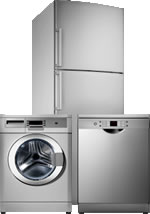How To Choose a Coffee or Espresso Brewing Machine
Coffee and espresso equipment is available in a variety of styles and levels of complexity. What will suit you depends upon your particular needs. You can go simple with a Mr. Coffee, you can make more robust coffee with a manual French press, you can automate production so that coffee is waiting for you when you wake or you can even buy equipment like your local barista uses.
The first thing to decide is whether a basic coffee maker can produce coffee you find flavorful and not bitter. Is the coffee from a basic unit hot enough and strong enough? If the answer to these is "no" then you may need to upgrade to a brewer with more features or brewing capability.
The next thing to consider is capacity. How much coffee do you need to brew at one time. Do you need a single cup, a small carafe, or enough for several cups? If you make a cup in the morning for yourself before you head out the door, a cup brewer or espresso machine might be a good choice. If you want a refill or two or will share a cup with someone, then a small carafe brewer or a heavier duty (for shorter heat up times) espresso machine might be appropriate. If you will be serving guest or wish to have coffee ready for refills, then a large carafe brewer is the best choice. A coffee urn can serve anywhere from 30 to 100 cups of coffee.
Several coffee machines include timers that allow you to set a time for fresh coffee to be brewed. if you want a cup ready for you in the morning, then look for this feature. Some models even have built-in grinders to grind the beans fresh for brewing.
If your goal is to produce the perfect cup of coffee, then brewing quality is affected by several factors. First, look for models that filter the water used for brewing. Removing impurities and off flavors from tap water is an important step to great coffee. A second important element is the brewing temperature. The water must reach a sufficiently high temperature before it touches the coffee grounds. Coffee that is warmed in the carafe after brewing will do nothing to improve its flavor and will actually negatively impact the it. Look for models that can brew in the range of 180° to 200° (F).
If you are looking for truly automated brewing, some espresso machines can be plumbed for water, eliminating the need for refilling. A built-in grinder can hold whole beans fresh and grind them immediately before brewing. A few models will hold milk or cream cool and steam or froth it for a latte or cappuccino.
Pod brewers simplify the brewing process by using premeasured, prepackaged pods of coffee grounds which are placed into the brewer, then disposed of after brewing is complete. These make a cup at a time but have the advantage of allowing each person to each brew their own preferred blend of coffee.
A completely different direction for making high quality coffee is to brew in a French press or Moka pot. These devices put very hot water in direct contact with the grounds for a short period of time and produce very rich, robust coffee. They both require a little more attention, since they cannot be left unattended for long and should be poured as soon as brewing is complete. On the other hand, the simplicity of the devices and their easy cleaning make them a popular choice.
While elaborate brewing equipment can produce excellent coffee and may offer convenient features, some of that same equipment can be high maintenance. For instance the devices that hold chilled milk, have to be emptied and rinsed at the end of every day. Models that don't have automatic flushing sytems will also have to be rinsed after use or the delicate equipment can corrode or develop mold. Try to review the owners manual for recommended operation and maintenance before you buy to ensure that you don't end up with equipment that ends up being a nuisance to use.
Finally, most coffee makers and espresso machines are countertop models. But with kitchen counter space always at a premium, you may want to choose an under-cabinet mounting model or even an in-wall unit. Some manufacturers produce in-wall coffee makers to match their line of built-in appliances.
For more information on any of these coffee or espresso making options, follow the relevant link for that style brewer in our main coffee brewing section.





